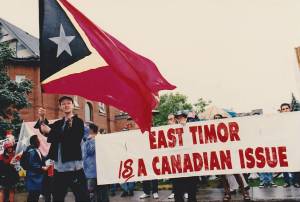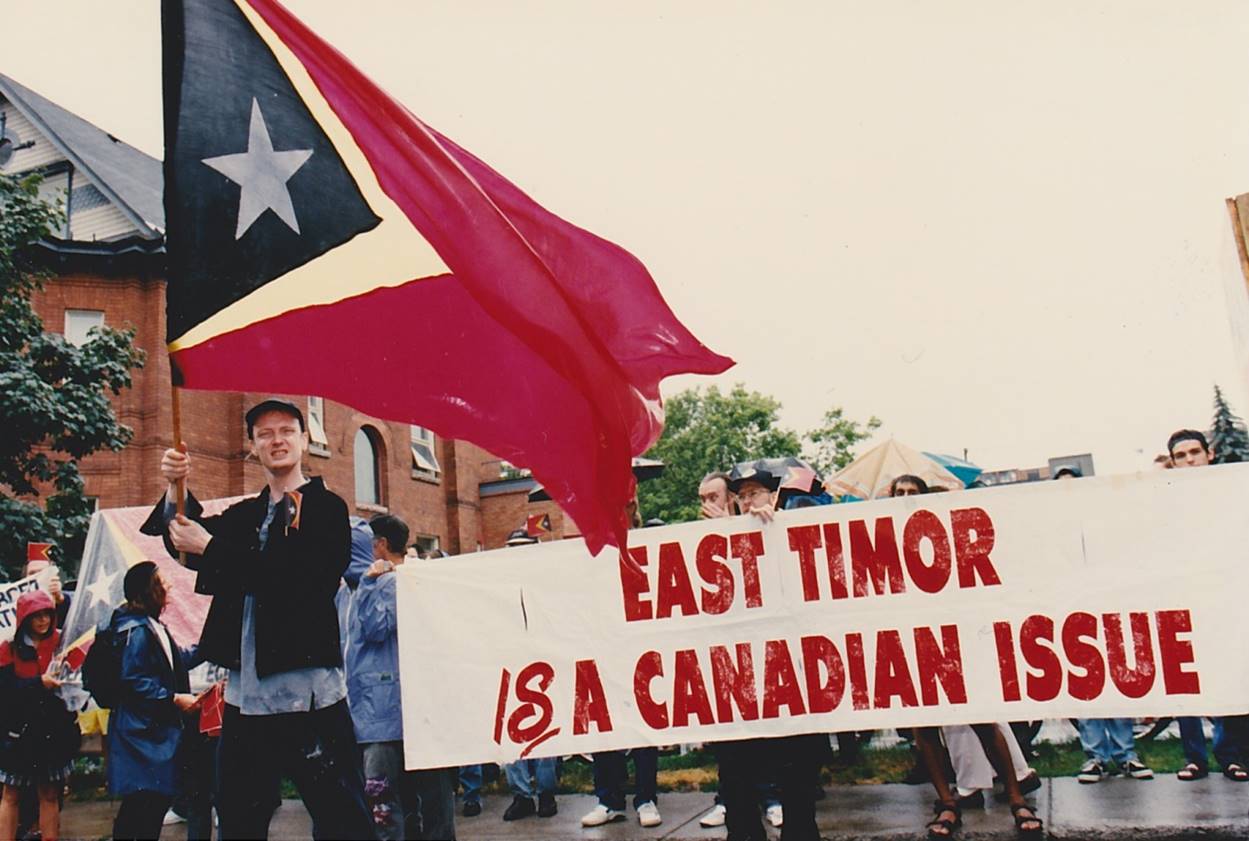 In 1991, Indonesian soldiers opened fire on a protest in Dili, East Timor, as protesters entered the Santa Cruz cemetery. Church sources put the death toll at 273 killed, with many more injured or missing. The massacre was a human tragedy, but also a turning point for the Timorese independence movement, which increasingly gained support around the world. Among those killed was Kamal Bamadhaj, whose step-sister Li-lien Gibbons lived in Canada.
In 1991, Indonesian soldiers opened fire on a protest in Dili, East Timor, as protesters entered the Santa Cruz cemetery. Church sources put the death toll at 273 killed, with many more injured or missing. The massacre was a human tragedy, but also a turning point for the Timorese independence movement, which increasingly gained support around the world. Among those killed was Kamal Bamadhaj, whose step-sister Li-lien Gibbons lived in Canada.
As footage of the Santa Cruz massacre footage screened on the nightly news, more and more Canadians started to know, and care, about East Timor. After the massacre, two Timorese students were accepted for refugee status in Canada: Bella Galhos and Abé Barreto Soares. Through the mid-1990s, voices reached more and more Canadians, especially in church groups, on university campuses and in trade unions. ETAN’s national office moved to Toronto and active local groups emerged in Montreal, Ottawa, Winnipeg, Windsor and elsewhere. A Portuguese-speaking ETAN committee, the Comissão para a Libertação do Povo Maubere, also formed in this period. East Timor was becoming a Canadian issue, moving from the fringes of public awareness to the front pages. Meanwhile, Canadian government documents indicate that the East Timor solidarity movement was starting to be heard.
Images: ETAN/Ottawa protest march with Timorese flags (ETAN papers); ETAN/Vancouver protest march (Elaine Briere); Agio Pereira of the East Timor Relief Association performs in a Toronto concert (ETAN papers); ETAN conference group photos from Windsor, Ontario, and Toronto (ETAN papers); Li-lien Gibbons at Vancouver protest (Elaine Briere).





